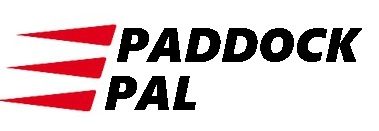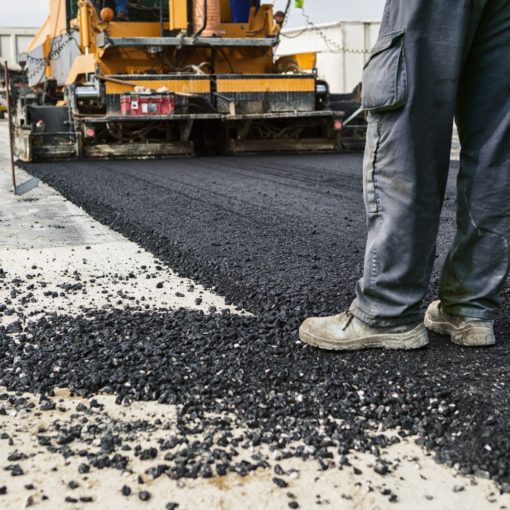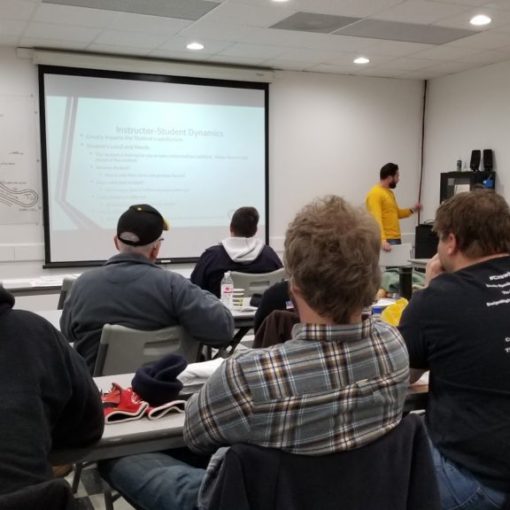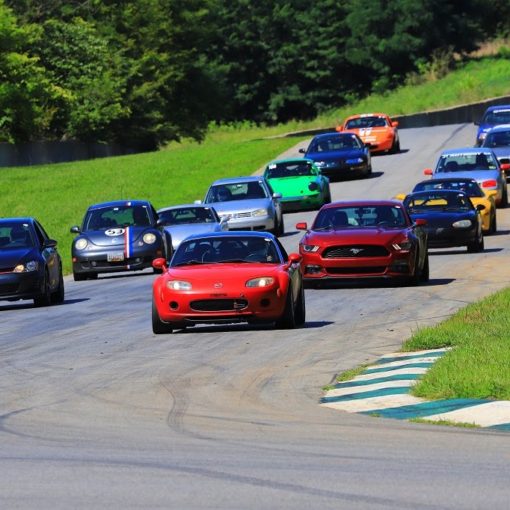Check back often as this article changes without notice. Note: Some questions have multiple answers associated with them.
Would you like to get a question answered? Don’t hesitate to reach out!
Q; Do I need a passenger seat for Club trials and/or HPDE events?A: Ideally for HPDE events all cars should have a passenger seat installed with “equal restraint” to that of the driver, ie: if the driver has a 5pt, so should the passenger side. Depending on your skill level, say: Advanced, Time Trials or Instructor you may opt to remove the passenger seat as you might never – if ever – have a passenger in your car. However, if you are still a student needing an instructor you’ll be required to have a passenger seat. |
Q; You can rent helmets from OGRacing for Summit Point events for HPDE, Correct? If so, How much?A: Around $50. They ship it to you and you ship it back…no visits to the Store required! |
Q; I am having a blast at the DE events and autocrosses and I am becoming inspired to become a much better driver than I am. At these events however, I can only learn so much when everything is going well (which for the post part so far, everything has been). I want to know where I can go to learn and experience how I will actually react when things aren’t going well, in a controlled environment. Short of driving off track on purpose or driving like an asshole to upset the car and possibly ruining everyone else’s day, I don’t know how to go about this. Any suggestions? Also, can anyone recommend some publications on car control and improving driver skill?A: More time on skid pad, but not for the purpose of being drift king. Start looking for an exit strategy for every turn on every track. Push just slightly past your comfort level, but still well within the track to see how your car and you react. Consider trying out some vehicles with less control / drivers aids, where you can’t get hurt: dirt tracks, rallycross, go karts, etc; work to get a better seat of the pants feel. The final step would be to add some sort of data collection and compare it against faster driver. Drive to Win: Essential Guide to Race Driving by Carroll Smith (he’s got some other good ones too – Prepare / Tune / Engineer to Win), The Racing Driver by Denis Jenkinson, and Speed Secrets by Ross Bentley is the absolute bible on these things. |
Q; Last year, I tried the android GPS laptimers (Harry’s, etc) and they were OK; But is there something out there that is better or preferred?A: I like the AIM Solo ($399 option) and the Go Pro. You can always use RaceRender to overlay data with that approach. The iPhone and Harry’s suffers from running out of batteries really quickly, overheats in the summer and shuts down and doesn’t have very good offline data to analyze. AIM has an amazing amount of data and with their Race Studio program you can really get valuable information on your driving. A lot depends on what you’re trying to accomplish – do you want YouTube videos or are you looking to analyze data? The challenge with data analysis is that it’s very complicated and detailed. Drivers who live and breathe data often are technically perfect and wholly distracted because they’re so busy analyzing data. AIM+OBD2 provides data directly from the OBD port on the car, hence the increased cost ($699). In other words, it’ll provide data about oil temp, pressure, etc that’s saved by OBD. Is it worth the extra cost? IMHO, no but some people have a strong desire to know that their oil temps were exactly 231 degrees at 6198 rpms for 13.6 seconds before dropping precipitously to 227 degrees at 5723 rpms. This is all separate of telemetry which includes G-loads and track position. What it doesn’t show is brake or throttle pressure – I don’t think OBD captures that. That’s probably the single most useful bit of info since a driver who is slow will always claim “But I was full on the throttle”. G-loads say otherwise and by showing throttle pressure as a percentage, it helps to prove the case. |
Q; I’m looking to buy a new Helmet, I’ve done a little bit of brand research, any recommendations?A: Ultimately helmets are about fitment more than price – people often times walk into a shop and ask to purchase “the best, most expensive helmet” in the store. The reality is that the best helmet for any person is the one that fits them the best regardless of purchase price. My personal go-to helmet is Bell because they fit me the best. After that, I like Arai and HJC equally although they represent the high and low price points in the market. Typically Sparco helmets don’t fit many people as they are cut small and Simpson is a crap-shoot. I don’t know much about Roux (or Stilo for that matter) but all of these brands have passed either (or both) the Snell or FIA tests for certification so they meet the letter of the law. Also, if any of you guys wear glasses and haven’t tried Arai I recommend it. I had always worn Bell till someone told me about the Arai fitment with glasses on, it’s magic and now I buy Arai. Again, the perfect fit is worth the price to me because having my glasses finally sit right on my face was MASSIVE for comfort. |
Q; Does the philosophy with rotors on the track hold true on the street as well? Buy the cheapest rotors you can find and let the good pads do all the work?A: For the street I like brandname, I usually rotate through EBC, Brembo or Zimmerman rotors depending on the car. I will never recommend cross drills, slotted can be ok. I’ve found the slotted + dimpled and cross drills just act as a cheese grater and don’t add much but looks, looks and prematurely wear out the pads or crack. I’ve done the experiment on the track car and went to plain solid rotors + race pads. And it stops on the order of 20x better than before. I still need to upgrade the fluid and I bet it would be better still. For the track you’re going to just abuse the rotors, so go cheap and replace often (when necessary). I use the cheapest rotors both on and off the track because they’re disposable items. Slotted has a similar effect to drilled but to a lesser degree. Smooth rotors are your friend (and your wallet’s friend). Brake pads are where it’s at! |
Q; Since I just started on the track. I am looking to upgrade my brake pads. I do drive on the street as well so I would not want to get a strictly track based pad. Can you recommend the best deal for pads and what brand?A: A brake pad swap is not difficult. That being said I just got done running carbotech XP8’s and they were great on and off the track, noisy and dusty but no performance issues. They lasted 10,000 miles and 10 or so track days, granted this is in lightweight car. A dual Hawk combo would be good, maybe DTC60/30s for the track and HPS/HP+ for street. I’m assuming you aren’t going to be on your current tires much longer, but you really need to pair your brakes to your tires. The brake can only stop as much as the tire will allow. I would look at getting 200ish treadware tire and even if you have to buy a second set of rims it will save you money. I would argue that there is no such thing as a good street pad that is also a good track pad. Just like All-Season Tyres, they’re all around OK, just not good. I’m partial to Hawk even though many folks I know use PFC. Hawk offers a myriad of compounds which can also be bad, BUT they tend to keep them around forever. I always recommend EBC yellowstuff pads for those just starting out in Green (Beginner, A) group. Its a compromise pad that will work well on the street and hold on for early track duty. EBCs are your cheaper option when you’re just starting out. Hawks or PFC are the end game for sure. With the additional heat you will put into your braking system with performance pads, your fluid will have to handle much higher temperatures. I use ATE type 200 brake fluid, but there are several other fluids on the market that are well regarded (Motul, Castrol, etc). |
Q; In a lot of the club rules you'll notice information surrounding "DOT Approved Racing Tires" -- The language isn't very clear surrounding the regulation, so what exactly does that mean? Let's consider popular tires like: NT01, R888, BFG-R1, RA1, etc, Do they fit that criteria?A: BFG and Hoosier were the first to cast tyres that were DOT approved with 4/32nd of tread (read: AT THE WEAR BARS). Since that time, virtually every manufacturer that produces an R-compound tyre has done the same thing. In some cases, they have produced tyres that look DOT legal (read: WITH TREAD) but if they don't have a DOT certification, it's not DOT approved and therefore NOT legal. Continental slicks aren't DOT approved and no matter what you provide as evidence that the compound is "the same as", they don't have a DOT certification so they're not IT legal. It really isn't that difficult to figure out the difference but in the DE world where anything goes (and some clubs will allow anything), in the Club Racing world, especially for slower cars, the rules are fairly simple: wheel and tyre with X diameter by Y width wheels and DOT certification - it's that simple. |
Q; I'm a backyard mechanic and I am tired of working on the ground under my car while it's up on jack stands. Does anyone have any recommendations for Lifts for a small/normal sized garage?A: There are several options on the market, here are a few that you might be interested in researching more on: Dannmar MaxJack and Bendpack Ranger Jack |
Q; I am getting tired of paying for mounting/unmounting of tires. I do it a lot...and it will only get worse. Now, I won't be able to balance them, but do you guys think it is worth the $40 gamble to give this thing a try? I have some trashed rims with trash tires on them already that I could do testing with anyway. Thoughts?A: Given the aspect ratio of your tyres and the stiff sidewall, I wouldn't go with a manual tyre changer. Even with your size (17"), the amount of effort to break the bead and dismount the tyre would be excessive. Instead, save your pennies and buy a pnenumatic tyre changer instead. Another option is to watch the various auction sites and find a shop that's going out of business and buy their old equipment. It won't necessarily be fancy or new BUT given the 50 tyres/year you'll be mounting, it would almost certainly be up to the task. Harbor Freight has the answer for your balancing needs as well. I don't usually buy things from Harbor Freight but, at the prices here, I don't see how you can go wrong if you give it a try. 130$ if it works it pays for itself with 2 swaps. |
Q; Are you all running the same oil and fluids in your street cars that you run in your track cars? I have about 45K on my daily and have been running the regular oil recommended by the manufacturer since I bought it but is it time to maybe switch to synthetic or a blend?A: I am not running the same in both. Alot of us use Motul 300v Race oil in race car and whatever the recommended oil is on the dailies. Don't do motul race in your street car. Mobil One is good, Redline is great also, but do something more compatible with street use. We run the motul v300 race oil at the track. I would recommend switching to Mobil-1 for the street. Castrol GTX was great 30 years ago when there wasn't alot of options. But Mobil is definitely a staple. we've always run Motul or Total in the TDIs, because they require a special synthetic blend. |
Q; I've never had an oil analysis done… how do you do it? Or where do you get it done?A: http://www.blackstone-labs.com/ - Capture some oil doing your change in one of their free test kits, send it off to them for analysis.I did notice you can buy Wix Oil Analysis kits for less than $20 on amazon. |
Q; Is it normal for racing tires (r-comps, slicks, etc) to loose a lot of air when it's cold? I mean more than a normal tire?A: Competition Tires, especially slicks are more porous and tend to fluctuate more in cold weather and will also flat spot more easily. Recommended you park the car with them off and stacked in a garage not out in the elements. R-compound tyres hold air like a sieve holds water. The old Hoosier Autocrosser (bias-ply) held enough air to complete 3-4 runs before needing more air. Nitrogen is preferable to air for 2 reasons. 1 - nitrogen isn't affected by ambient temperatures which keeps pressures relatively stable across the tyre's temperature range. 2 - nitrogen molecules are larger than air and have a greater opportunity to be "trapped" inside the tyre. |
Q; I have a SPA AFFF steel bottle and a Halon system. Is there any way that I can get my fire bottles refilled and if so, how much? If not, where can I get them refilled?A: OGRacing now has the ability to recharge fire bottles. However, Halon systems requires a specialty gas and can only be done by a fire extinguisher company. |
Q; What does having a sponsor do for the driver/racer? Who or what type of organizations can sponsor a driver? At what time or milestone in my advancement should or would I seek sponsorship? What are the typical obligations of someone that is sponsored? I see organizations listed in the Sponsor column for some drivers on MSR entry list. Are these business sponsors or just affiliations?A: Some groups (eEuroparts, Winding Road Racing, Joe's Racing, etc) offer individual sponsorships where you get a deal on parts/items either via discount and/or credits to use in their store.. And many of the deals may depend upon different things such as how you finish a race, or if you write an article/DIY that they can publish to their site...and making sure you have their decals on your car however they want them... Then there are sponsors of various racing series...where the rules of the series are to display those specific decals of those sponsors. They then may tie in contingencies for finishing. |
Q; I'm thinking about upgrading the suspension on my car. A little back story on the car and myself maybe so you guys can help me out. So now the hard part is deciding what suspension to get, I have narrowed it down to I think, 4 options; 2 'budget options' and 2 'top tier AAA options'. This is the part where I am stuck, I don't want to pay for more suspension than I need. This is a hobby to me and will always be a hobby. I really don't plan on competing.A: I started doing track days on stock suspension (old/tired sport bilsteins) I ended up going the "cheap" route with the option that fit my budget, though a number of folks poo-poo'd it. To be honest, I'm kind of torn.. every driver/racer who has ridden in my car has said that my car feels VERY planted and is set up very well. I haven't driven a Spec Suspension car, nor had a good enough driver drive one back to back with mine.. but folks who I think are similar ability to me with the same car running on more sophisticated suspensions have come ask me why my car looks more stable/planted than theirs. I don't get to the track much, so having a suspension that I know I can't fiddle with now that's it's pretty well dialed in is a god-send.. it's predictable, pretty fast, rides well on-track, and is, for me, "fast". The "car guy" in me always thinks I should have gotten "higher end" gear. That said.. with a higher end setup, I'd need to figure out spring rates and dial things in.. and frankly.. at the end of the day - be a higher level driver than I am now who drives a LOT more frequently on track to really get the value out of those options. So I think I made the right choice going inexpensive, and taking the rest of the money and using it on R-comps/brake pads/more track days. You definitely don't need fancy shocks to have fun, new OE stuff with stiffer bushings and springs carried me through a couple seasons. I finally swapped to nicer stuff when I was going to the track more often and finally bent a shock hopping curbs. One thing to consider is the nicer shocks will ride much nicer on the street (moot point if you tow to the track). |
Q; I just found a harness that I am really interested in, but I want to make sure that SCCA, HOD, ACNA, etc will let me run with them? Do you all have any insight into each group's policies? I can't find anything about harnesses on any of the websites. One club does say that 5 point harnesses are required for their "Group D: Race prepped cars: This includes cars with structural, four point (or more) roll hoops, five point harnesses and a fire bottle..." but that doesn't say anything about not allowing any harness types.A: As an EMS Provider...I cringe heavily at mixed set ups. Your factory seats, seatbelts, and airbags are all designed intentionally to work together. They are engineered for intentional give (to help with deceleration in a crash, or to allow for movement should there be intrusion into the passenger cabin, rollover, etc). Suddenly, you're replacing something that intentionally has some give/play because of how it works with the other pieces with one component that doesn't. Additionally, 4 points allow for the potential for you to slide below the belt which could cause significant spinal damage or other trauma largely because of the angle on the shoulders. Because of this, I honestly would strongly advise NOT replacing JUST one component of those...but save up and do seats/harness/rollbar all at once as a package deal, opting for either a 5 point or 6 point setup. |



